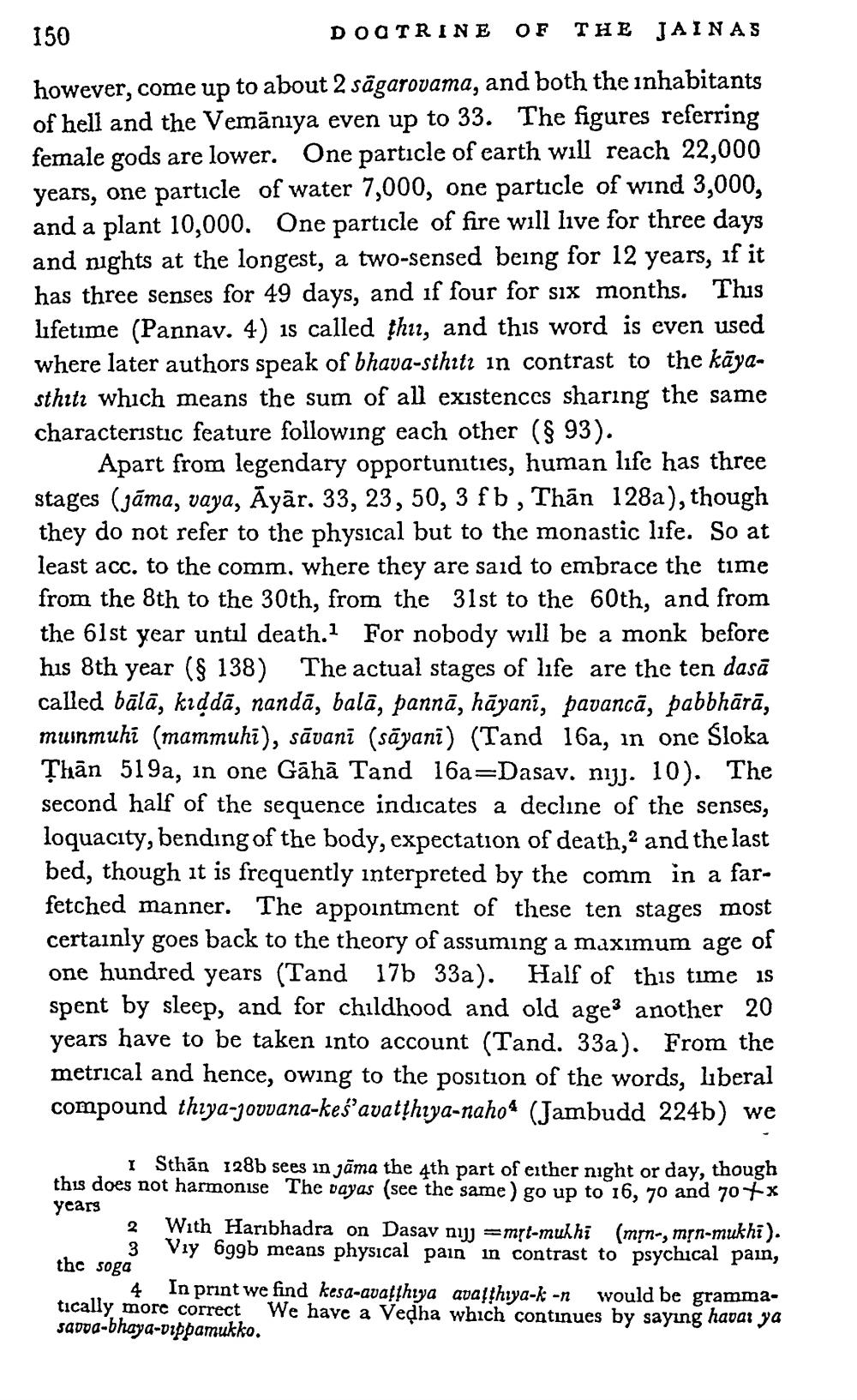________________
DOCTRINE OF THE JAINAS
however, come up to about 2 sägarovama, and both the inhabitants of hell and the Vemänıya even up to 33. The figures referring female gods are lower. One particle of earth will reach 22,000 years, one particle of water 7,000, one particle of wind 3,000, and a plant 10,000. One particle of fire will live for three days and nights at the longest, a two-sensed being for 12 years, if it has three senses for 49 days, and if four for six months. This lifetime (Pannav. 4) is called thir, and this word is even used where later authors speak of bhava-sthiti in contrast to the kayasthiti which means the sum of all existences sharing the same characteristic feature following each other (§ 93).
Apart from legendary opportunities, human life has three stages (jama, vaya, Äyār. 33, 23, 50, 3 fb, Thân 128a), though they do not refer to the physical but to the monastic life. So at least acc. to the comm, where they are said to embrace the time from the 8th to the 30th, from the 31st to the 60th, and from the 61st year until death.1 For nobody will be a monk before his 8th year (§ 138) The actual stages of life are the ten dasa called bālā, kıḍdā, nandā, balā, pannā, hāyanī, pavancā, pabbhārā, munmuhi (mammuhi), sāvanī (sāyani) (Tand 16a, in one Śloka Than 519a, in one Gāhā Tand 16a=Dasav. nijj. 10). The second half of the sequence indicates a decline of the senses, loquacity, bending of the body, expectation of death, and the last bed, though it is frequently interpreted by the comm in a farfetched manner. The appointment of these ten stages most certainly goes back to the theory of assuming a maximum age of one hundred years (Tand 17b 33a). Half of this time is spent by sleep, and for childhood and old age3 another 20 years have to be taken into account (Tand. 33a). From the metrical and hence, owing to the position of the words, liberal compound thiya-jovvana-kes avatṭhiya-naho (Jambudd 224b) we
2
150
I Sthan 128b sees in jama the 4th part of either night or day, though this does not harmonise The vayas (see the same) go up to 16, 70 and 70+x
years
2 With Haribhadra on Dasav nijj mṛt-mukhi (mṛn-, mṛn-mukhi). 3 Viy 699b means physical pain in contrast to psychical pain, the soga
4 In print we find kesa-avatthya avaithiya-k-n would be grammatically more correct We have a Vedha which continues by saying havar ya savva-bhaya-vippamukko.




